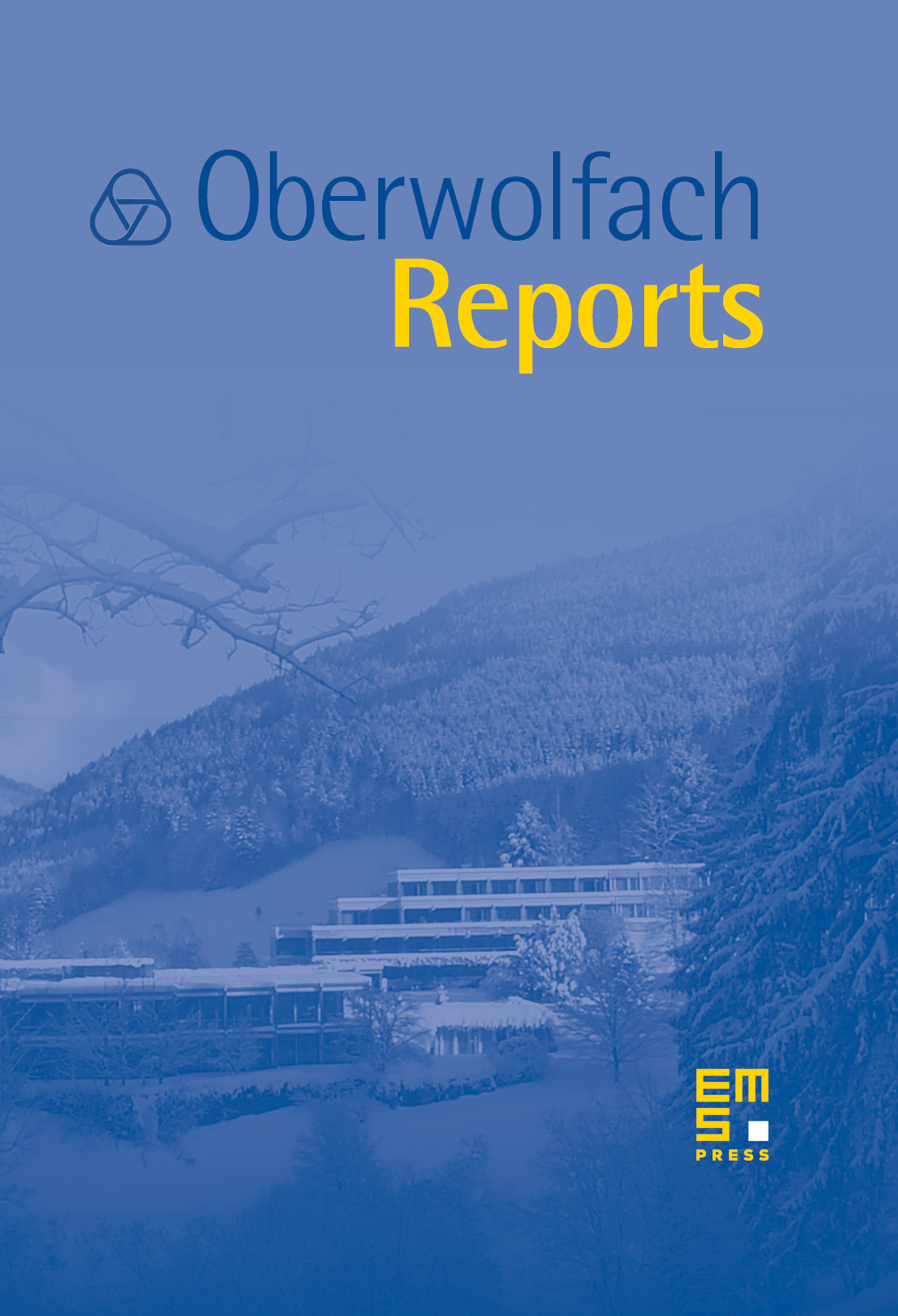Mini-Workshop: Interface Problems in Computational Fluid Dynamics
Eberhard Bänsch
Universität Erlangen-Nünberg, GermanyLutz Tobiska
Otto-von-Guericke-Universität, Magdeburg, GermanyNoel J. Walkington
Carnegie Mellon University, Pittsburgh, USA

Abstract
This workshop was concurrent with the workshop on Analytical and Numerical Methods in Image and Surface Processing (see: Report No. 10/2005), and since the participants interests overlapped several combined talks were organized. In particular, we thank P. Schroder, U. Reif, G. Dziuk, C. Elliot, and F. Cirak, for their contributions.
Currently there are three major techniques for tracking or characterizing interfaces present in a CFD computation: (i) The level set method, (ii) Phase field approximations, and (iii) Explicit parameterization using Lagrangian variables. Each of these techniques, and various hybrids, were presented by the participants to solve a variety of challenging CFD problems involving interfaces. Several trends emerged during the workshop.
- The analysis of phase field algorithms is much more advanced than that of the level set method (Elliot and Walkington).
- If the topology of the surface doesn't change, Lagrangian methods provide very accurate descriptions of the complex motions and physics of the interfaces (see for example the Willmore flow by Dzuik). Many hybrid Eulerian/Lagrangian schemes were presented such as the immersed interface method (Gastaldi), volume of fluid method (Picasso), ALE and deforming mesh methods (Behr, Krahl, Mehnert, Ganesan). The most detailed simulations presented at the workshop modeled hundreds of interacting rigid particles (Turek). The pistons and orientations of the particles were explicitly computed. Progress has been made in the analysis of Lagrangian schemes to model interfacial motion (Dzuik, Mehnert, Nobile) for problems where the interface remains regular.
- Practical application of the level set technique appears to require frequent reparameterization of the level set function, and in order to obtain a sharp interface it is necessary to evaluate the Heavyside function of the level set function. These modifications to the basic algorithm represent a significant complication to the analysis of this class of methods. These complications also appear to extend to the practical implementation; for example, both Burman and Reusken evolve their interfaces using level sets, but explicitly construct a parametrization of the interface at each time step.
Cite this article
Eberhard Bänsch, Lutz Tobiska, Noel J. Walkington, Mini-Workshop: Interface Problems in Computational Fluid Dynamics. Oberwolfach Rep. 2 (2005), no. 1, pp. 465–502
DOI 10.4171/OWR/2005/08